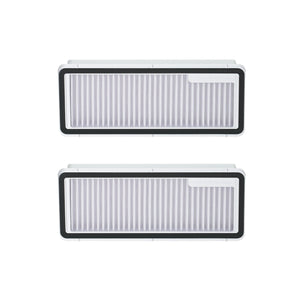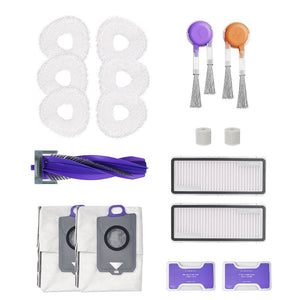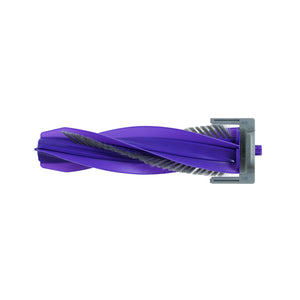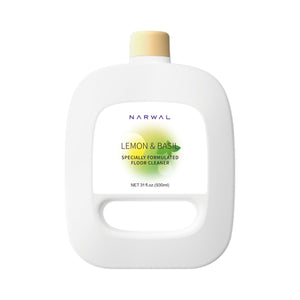Are you tired of dealing with grease, crumbs, and clutter in your kitchen? Juggling busy lives often makes keeping the kitchen clean feel like an endless chore. From wiping down countertops and cooktops to maintaining appliances, every corner requires attention. Fortunately, with the help of modern technology and the right cleaning tools—like vacuum robots—you can tackle this challenge effortlessly and keep your kitchen looking pristine.
Enhancing Kitchen Cleanliness with Vacuum Robots
In a busy kitchen, maintaining cleanliness can be a challenge, but vacuum robots offer a practical solution. These innovative devices not only keep your kitchen floors spotless but also save you valuable time and effort.
Advantages of Using Vacuum Robots in the Kitchen

Vacuum robots are particularly advantageous in high-traffic areas, ensuring that crumbs, dust, and dirt are consistently removed. They’re designed to navigate autonomously, providing efficient cleaning after cooking or dining, when messes often accumulate.
Efficient and Regular Cleaning of Kitchen Floors
- Continuous Cleanliness: Vacuum robots are programmed to operate regularly, making them ideal for busy kitchens. They effectively pick up debris, ensuring your floors remain clean without constant manual effort.
- Thorough Cleaning: Equipped with advanced sensors, modern vacuum robots can reach difficult spots, such as under cabinets and around furniture legs, delivering a comprehensive clean.
Time Savings and Convenience
- Automated Operation: Set your vacuum robot to clean while you’re away, reducing the time you spend on household chores. This feature allows for a consistently clean kitchen with minimal effort.
- Low Maintenance Effort: These robots are user-friendly; regular dust container emptying and occasional brush cleaning are all that’s required to keep them in top shape.
Selecting the Ideal Robot Vacuum for Your Kitchen
When choosing the right robot vacuum for your kitchen, several key factors should be considered to ensure it meets your cleaning needs. Here are some important aspects:
[cta:narwal-freo-z-ultra-robot-vacuum-mop]
- Cleaning Method: Decide if you need an all-in-one vacuum and mop combo or separate devices for vacuuming and mopping. The Narwal Freo Z Ultra offers a dual function—vacuuming with a powerful suction and mopping with dual mops that mimic hand washing, making it perfect for everyday cleaning without occupying extra space.
- Suction Power: Look for a robot with suction power above 2000Pa. The Narwal Freo Z Ultra boasts an impressive 12,000Pa suction, effectively removing food debris, grease, and dust from your kitchen floor, ensuring thorough cleaning.
- Navigation System: Choose a robot equipped with laser or visual navigation. The Freo Z Ultra features advanced dual RGB cameras and AI, allowing it to create a detailed 3D map of your kitchen, optimizing its cleaning route while avoiding obstacles efficiently.
- Obstacle Avoidance: Advanced obstacle avoidance features reduce collisions and damage. The Freo Z Ultra employs AI-powered visual obstacle detection, identifying over 120 different objects to navigate safely around furniture and appliances, keeping your kitchen intact.
- Cleaning Ability: Pay attention to the mopping method used. The Freo Z Ultra utilizes dual mops with 180 RPM scrubbing, effectively tackling stubborn stains like old ketchup and coffee spills. Its triangular mop head ensures edge-to-edge cleaning without streaks.
- Maintenance Ease: Consider the robot's maintenance convenience, such as dustbin and water tank capacity. The Freo Z Ultra features an automatic self-cleaning function for the mops and a 2.5L dust bag that can hold debris for up to 120 days, significantly reducing your workload.
- Brand and After-Sales Service: Choose a reputable brand like Narwal, known for its commitment to quality and customer support. Narwal has a strong global presence, serving over 1.8 million families worldwide, ensuring reliability and peace of mind during long-term use.
In summary, the Narwal Freo Z Ultra stands out as an exceptional choice for kitchen cleaning. With its powerful suction, advanced navigation, and smart features, it not only meets but exceeds the cleaning demands of a busy kitchen, providing efficiency and convenience for your home.
A clean kitchen goes beyond just the floors. Let’s explore how to keep every part of your kitchen spotless.
Cleaning Kitchen Surface
Keeping kitchen areas clean is crucial for hygiene and appearance. Different surfaces need tailored care techniques to ensure durability and maintain their attractive look.
Countertops

- Plastic: Plastic countertops are relatively easy to care for and robust. For routine cleaning, you can use warm water with a small amount of dish soap. For tougher stains, you can use mild glass cleaners, but avoid abrasive cleaners as they can scratch the surface.
- Wood: Wooden countertops require careful maintenance to maintain their appearance and durability. Quickly clean up any stains with a damp cloth to prevent them from penetrating the wood. Opt for mild cleaning solutions and always clean along the grain of the wood. Regular treatment with oil, such as linseed oil, helps to care for the wood and protect it from moisture.
- Natural Stone: Granite and marble countertops bring a touch of sophistication to the kitchen, but they demand extra maintenance. For cleaning, use clear water or special care products for natural stone. Steer clear of acidic cleaners, as they may harm the surface. Frequent sealing helps shield the stone from stains and simplifies upkeep.
Hobs

- Ceramic Hob: Ceramic hobs are practical but sensitive. Spills or overflows should be removed immediately after cooking. Use dish soap and a soft cloth for this. To tackle tough stains, combine baking soda with water, apply it to the stained spots, and after roughly an hour, rinse with clean water. Wiping with lemon juice adds extra shine.
Sinks

Sinks are used intensively every day and should be cleaned regularly. Utilize warm water mixed with dish soap to clear away dirt and grease. Vinegar is effective for tackling limescale. Soak a paper towel in vinegar, apply it to the limescale, and allow it to sit for around 30 minutes. Then rinse with clear water and dry. This method is particularly effective for sensitive surfaces like stainless steel sinks.
Glass Surfaces

Regularly cleaning glass surfaces in your kitchen not only contributes to cleanliness but also maintains their shine and transparency. Here are some important points to consider:
- Regular Cleaning: Glass surfaces such as windows, glass-front cabinets, or glass tables should be cleaned regularly with a mild cleaning solution and water. Wipe away dirt and grease completely with a gentle cloth or sponge.
- Avoid Abrasive Cleaners: Avoid using harsh cleaners on fragile glass, as they may scratch or harm it, reducing its luster. Opt for mild cleaning solutions made for glass instead.
- Stain Removal: For tough stains or smudges on glass, opt for a glass cleaner. Spray it on the glass and use a fresh, dry cloth or paper towel to buff it until it shines without streaks.
- Special Care for Glass: Pay special attention to cleaning and maintaining glass surfaces in the kitchen, as they are often visible and have a significant impact on the appearance of your kitchen. Keep them clean and shiny to ensure a pleasant and hygienic environment.
Stainless Steel

Stainless steel adds a sleek, modern touch to your kitchen, but it requires proper care to maintain its luster and prevent unsightly stains. Here are the best practices for keeping your stainless steel gleaming.
- Basic Cleaning Using Clean Water and Gentle Cloths: Stainless steel surfaces are modern and stylish but prone to fingerprints and grease stains. For cleaning, use clear water and soft, lint-free cloths. Often, a slightly damp microfiber cloth is sufficient. A bit of dish soap can be effective for tough stains. Afterward, clean with hot water and ensure the area is completely dried to prevent streaks.
- Avoid Abrasive Cleaners and Steel Wool: Avoid using abrasive cleaners and steel wool on stainless steel to maintain its shine, as these can cause scratches. Aggressive cleaning products like disinfectants and bleach are also unsuitable. Instead, use special stainless steel cleaners that are gentle and provide shine.
- Special Care for Matte Surfaces: Matte stainless steel needs careful maintenance. Always wipe along the grain to prevent scratches. For stubborn stains, a household cleaning cream can be used. After cleaning, wash with fresh water and thoroughly dry to avoid limescale marks. Tip: Do not leave wet cloths on the surface to avoid limescale stains.
Cleaning Specific Kitchen Appliances
Maintaining a clean kitchen involves not only regular surface cleaning but also paying attention to specific appliances that contribute to the overall hygiene and functionality of your cooking space.
Refrigerator

To thoroughly clean your refrigerator and avoid the formation of germs and unpleasant odors, you should regularly perform the following:
- Drawers and Shelves: Remove all drawers and shelves from the refrigerator. You can clean them in the dishwasher or by hand with a solution of warm water and vinegar. Allow them to dry thoroughly before replacing them to prevent mold growth.
- Interior Walls and Doors: For the interior cleaning of the refrigerator, you can make a cleaning paste from baking soda, water, and a few drops of dish soap. Apply the paste to the interior walls and door seals using a sponge or cloth. This mixture helps dissolve grease and stubborn dirt without damaging the refrigerator.
- Removing Odors: To eliminate unpleasant odors in the refrigerator, you can use a bowl of baking soda or activated charcoal odor absorbers. These effectively absorb odors and keep the refrigerator fresh.
- Exterior and Handle: For the exterior of the refrigerator, use a mild cleaning product and a soft cloth to remove fingerprints and stains. Steer clear of strong cleaners that may harm the finish.
Consistent cleaning and upkeep not only prolong your refrigerator’s life but also enhance kitchen hygiene.
Oven

Regular cleaning of your oven is important to remove burnt stains and extend the device's lifespan. Here are some effective cleaning methods:
- Burnt Stains: Combine baking soda and water to form a paste for removing stubborn burnt stains in the oven. Generously apply this paste to the affected areas and let it sit overnight. The next day, wipe the paste off with a damp sponge or cloth, and the burnt residue should come off easily.
- Oven Interior: To clean the entire interior of the oven, including the walls, racks, and the oven door, you can use an oven cleaner specifically formulated to effectively dissolve grease, oil, and burnt food residues. Follow the instructions on the package to achieve optimal results.
- Racks and Baking Sheets: Take out the racks and baking trays from the oven and give them a good cleaning. You can soak them in warm soapy water and then scrub with a brush or sponge to remove stubborn dirt.
- Oven Door: Focus on thoroughly cleaning the oven door, paying attention to the seals and the glass panel. Use a gentle cleaner and a soft cloth to eliminate streaks and smudges. Regular upkeep ensures your oven operates efficiently and that your meals are cooked in a sanitary setting.
Regular cleaning and maintenance ensure that your oven functions optimally and that your food is always prepared in a clean and hygienic environment.
Range Hoods

The range hood is an essential element in the kitchen that requires regular cleaning to ensure efficient function and longevity. Here are important points for cleaning the range hood:
- Regular Cleaning of Filters: The filters of the range hood should be cleaned regularly to remove grease and dirt deposits. You can wash metal grease filters in the dishwasher or clean them by hand using hot water and a gentle cleaner. Activated charcoal filters in recirculating hoods need to be changed periodically, following the manufacturer's guidelines.
- Removal of Grease and Deposits: Grease and deposits can accumulate inside the range hood, especially on the fan blades and in the housing. Utilize a cleaner designed to cut through grease or a blend of baking soda and water to eliminate these residues. Let the solution rest for several minutes before wiping it off with a gentle sponge or cloth.
- External Cleaning: Don’t forget to clean the exterior surface of the range hood as well. Wipe off smudges and dirt with a soft cloth dipped in a mild cleaning solution. Steer clear of harsh cleaners or scrubbing pads to avoid damaging the surface.
- Check Lighting: Regularly check the lighting of the range hood and clean the lamp cover from both inside and outside to ensure optimal light output.
Effective Cleaning of Kitchen Utensils

Maintaining cleanliness and order among your kitchen tools is crucial for a healthy cooking space. Let’s take a closer look at how dish organizers and drying racks can enhance both order and cleanliness in your kitchen.
Dish Organizers and Drying Racks
A well-organized dish area significantly contributes to cleanliness and efficiency in the kitchen. Dish organizers and drying racks are essential helpers. They allow for neat storage of dishes, cutlery, and kitchen utensils while promoting quick drying. A tool organizer can make small kitchen gadgets tidy and easy to reach.
Usage for Order and Cleanliness in the Dish Area
- Dish Organizer: These practical helpers ensure that sponges, brushes, and cleaning products are always on hand and organized. An organized dish space stops dirt and bacteria from building up.
- Drying Racks: After washing, you can place your dishes on drying racks. These enable quick and hygienic drying by allowing excess water to drain away, preventing dishes from coming into contact with standing water. Choose drying racks with removable trays for easy cleaning.
FAQs
1. How frequently should various kitchen components be cleaned?
Clean countertops and sinks daily to eliminate bacteria. Cooktops and ovens should be cleaned weekly, while the refrigerator needs a thorough clean once a month.
2. What cleaning agents are suitable for various kitchen materials?
- Wood: Use mild cleaners and avoid excess moisture; linseed oil is good for care.
- Natural Stone: Use specialized stone cleaners; avoid acidic cleaners.
- Stainless Steel: Clean with water and soft cloths; mild cleaners can tackle tough stains.
- Glass: Use water with vinegar or a commercial glass cleaner; avoid abrasives.
- Plastic: Warm water and dish soap are usually enough; mild glass cleaners work for tough stains.
3. How can I avoid fingerprints and wear marks?
- Regular Cleaning: Use a moist cloth to clean away fingerprints.
- Use Microfiber or Cotton Cloths: These are gentle and scratch-free.
- Stainless Steel Care: Use stainless steel cleaners that leave a protective layer.
- Matte Surfaces: Wipe along the grain to avoid scratches.
- Protective Films: Consider using protective films or coatings in high-traffic areas.

























































